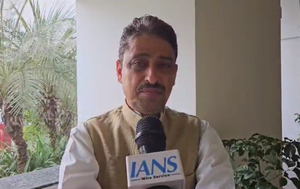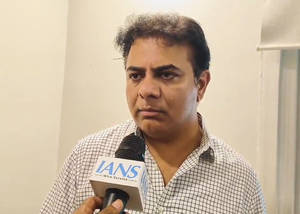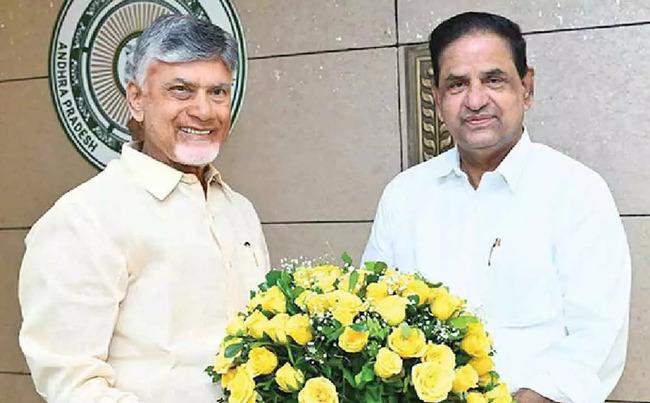The story of OnePlus is a bit like that of the bright child who displays great potential early in life. The OnePlus One came out of the blue and showed the world great hardware need not cost a bomb. The Two was a representation of the rebellious teenage years, a device that thought it knew best and made unconventional decisions. Some of these decisions, like the new charging standard, paid off, others like the omission of NFC, didn’t help its cause.But OnePlus is grown up now. It has ditched the snazzy sandstone threads for a sharp silver suit, and gained from experience. It has learnt to stand on its own feet and attend the smartphone party without needing an invite. This is the OnePlus 3, better learned and still brimming with energy.
The 3 has more in common with the One than the 2 in terms of design, though it looks a little HTC-like. Compared to the beefy second generation, this phone looks like it has been on a diet, and the svelte profile has left a camera bump on the rear. The right-side houses the power button and the dual nano-SIM tray (microSD support is a no-go, and the phone comes only with 64GB memory), while the left features volume control and the alert slider. The textured alert slider lets users switch between silent, all notifications or priority notifications without unlocking the device. The fingerprint sensor, which is also a capacitive button, resides below the display, and can unlock the device in one go without needing to turn on the display first. It is among the most responsive sensors we have tested, though the button-like design can mislead users into thinking it is supposed to depress. The back is sleek metal broken only by the OnePlus logo and the 16MP camera and single LED flash.
The specsheet of the 3 is a mixed bag. The processor is a flagship grade Snapdragon 820 and the RAM is a ludicrous 6GB, but the display remains a 5.5 inch 1080P panel for the third time in a row. OnePlus has switched to an AMOLED panel, a variety it calls OpticAMOLED, and cites battery as one of the reasons for the display not getting a bigger upgrade. And that is precisely one of the most confusing choices OnePlus has made. The 3,000mAh battery is a downgrade from both the previous phones, and most likely a side-effect of the super-slim body. While this aesthetic sacrifice would have been normal for some manufacturers, such a choice from OnePlus is unexpected.
So the story so far has had some twists and turns, but what is it like to use? This is an area where OnePlus has stuck to its strengths. The Snapdragon 820 flies through everything from multitasking to gaming, with transitions and frame rates remaining steady throughout. The RAM figure seems a little unnecessary at the moment, and does not have any significant impact upon real-world performance, but with software getting more demanding, a little extra room helps with futureproofing, so we won’t complain.
The company’s home-baked Oxygen OS, now on version 3.1.2 on top Android 6.0.1 Marshmallow, is a pretty clean yet refined affair. The system-wide dark mode with customisable accent colours looks marvellous on the AMOLED display, and the Shelf feature, which dedicates a homescreen pane to display weather, take quick memos, add frequent contacts, apps and even widgets, is handy. Like most other such tweaks, it can be disabled. The 3 also comes with the SwiftKey keyboard bundled in, which provides a lot more extra options on the text input front.
Popular features that make a return are the gestures to turn on flash or display, open the camera, play music, and the option to use hardware or software buttons or swap their order as desired. OnePlus has also baked in options to adjust colour balance and a night mode that makes the display colours warmer to reduce eye strain during night-time use. The alert slider also gets customisation, allowing users granular control over what alerts or calls will be allowed when the device is in priority or silent mode.
Cameras have never been OnePlus’ strongest feature, but the 3 has made improvements here as well. The 16MP shooter resolves a great amount of detail and keeps noise to a minimum. Low light situations see a little faltering, but the camera manages to salvage decent shots even there. The software has also got enough to tinker with, including a manual mode (which packs the nifty option of setting different points for focus and exposure) and RAW support. The front camera also captured some truly impressive shots, getting close to LG G5 level of detail, though LG’s fist recognition for selfie capture is more sensible than OnePlus’ trigger happy smile shutter option. It’s not going to scare the Samsung Galaxies or the G5, but for a device that costs half as much, OnePlus has made huge leaps on the camera front.
With all this positivity, there has to be a catch somewhere, and the Achilles Heel of the 3 is its battery. For a phone that follows the OnePlus One, which had legendary battery backup, the 3 does not quite match up. It can get through a day more often than not, but might need a topup now and then. The Dash Charging technology allows the phone to juice up quite rapidly, but it only works with the included charger
When all is done and dusted, the OnePlus 3 comes across as an impressive, if flawed phone. It has its moments of greatness peppered with some sigh-inducing frustrations. But when you consider that it does the good almost as well as the best in the business, and the bad a lot better than many others, at a price tag of Rs.28,000, the blemishes become just that, blemishes. This is no flagship killer, but it is a pretty great phone.
Recent Random Post:
















